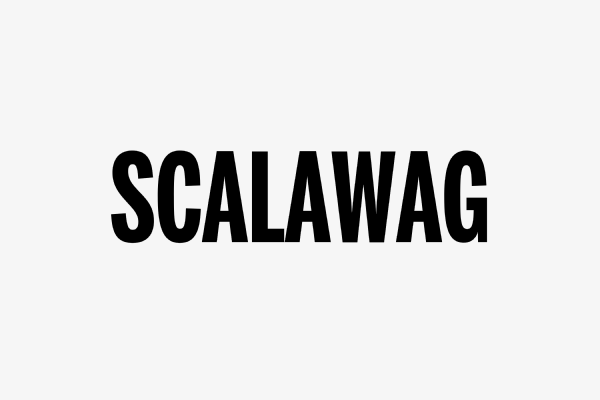

The Newspack Case Study is an ongoing series highlighting the best practices of publishers who use Newspack’s Platform for News—a suite of tools designed to drive editorial excellence and business success.
The Case
The Newspack team is constantly looking for new ways to support publishers and fresh features to offer. One of those features is header bidding — an advanced programmatic advertising technique that allows multiple partners to bid for a given ad impression. Before offering this feature to all Newspack publishers, the team tested it with Times of San Diego. In just three months, the for-profit site saw a 24% increase in ad revenue per thousand impressions, or RPM.
The Stats
- Times of San Diego’s average monthly uniques: 600,000
- Last month’s increase in RPM: 24%
- Number of full-time-equivalent employees: 4
The Backstory
The world of digital advertising is complex, changes rapidly, and — for the average person — can be daunting to understand. This is especially true for programmatic advertising, which comes with its own mix of terms and acronyms. But Katie Rethman, Newspack’s head of ad product, is especially good at explaining it all in an easy-to-comprehend way.
That’s what Chris Jennewein, editor and publisher of Times of San Diego, discovered when Rethman approached him about trying out a new programmatic advertising technique on his site.
“My forte is really editorial, so it’s been a heavy lift for me to learn advertising,” Jennewein said. “But Katie’s an expert. I’ve really enjoyed working with her. She’s helped me reach a new level at Times of San Diego.”
In January, Rethman reached out to Jennewein about testing out header bidding — a programmatic advertising technique that allows publishers to simultaneously offer inventory to multiple ad exchanges.
“It takes the decision making out of the ad server, which relies on a waterfall method, and puts it in this fancy JavaScript in the head of the site,” Rethman explained. “So when the site loads, you get a true head to head auction for each impression.”
Then, the highest bidder wins the ad space.
It’s now been more than three months since Times of San Diego has enabled header bidding, and both Rethman and Jennewein are happy with the results. In particular, they saw a 24% increase in ad revenue per 1,000 users. “It was amazing,” Rethman said.
There are lots of benefits to header bidding — increased revenue and ad quality, plus the ability for more advertisers to bid on impressions — and the Newspack team is excited to offer the option to more publishers.
“What I love about programmatic advertising is that it frees you to just cover the news without fear or favor, as The New York Times likes to say,” Jennewein said. “To the extent that local media can tap that programmatic advertising, that’s going to help maintain independence.”
“Header bidding is one more step in creating that independence,” Jennewein continued. “What local media is selling is advertising space. We’re not selling influence through a large local advertiser.”
The Takeaways
Is header bidding worth it? Jennewein and Rethman offered three tips for publishers considering a different approach to programmatic advertising.
1. Do a test run
Rethman encourages any Newspack publishers to try out new features or workflows by “dipping your toe in it.” She says people can always try a different approach for a few months and, if it doesn’t work, return to the old way of doing things.
That’s how she convinced Jennewein to give it a try. “I’m not risk averse, but I also want to maintain revenue,” he said. “Katie asked me to try [header bidding] for a few months and see what happens.”
Rethman made the necessary changes in the Newspack Advertising plugin and, within minutes, header bidding was running on the Times of San Diego site.
“Give it a try. You can always turn it off,” said Jennewein. “If it’s not working after a couple weeks or a month — and you’ll know immediately if it’s not working — you can step back. But my experience has certainly been positive.”
2. Remember your overall goals
Rethman said that a major benefit to enabling programmatic advertising is that it frees up publishers to focus on the content they produce.
“Publishers often feel like they have to prioritize their time in keeping the site running monetarily, and then the content takes a massive dip,” Rethman said. “We want to offer solutions so that’s not the case.”
At Times of San Diego, Jennewein is the only full-time employee on staff. He works with a team of seven part-time writers and photographers, which he would love to expand. For Jennewein, increased revenue from advertising is a crucial way to grow the Times’ staff.
“The more revenue I can generate, the more content I could have,” he said. “We can bring more people on.”
3. Always be learning
Jennewein has worked in the media for over 50 years. “You can probably guess I’m past retirement age,” he joked. But that doesn’t mean he’s done working or learning.
In addition to his full-time job of running Times of San Diego, Jennewein challenges himself to keep up to date with industry changes by reading journalism newsletters, such as Nieman Lab’s daily and weekly offerings.
“I want to learn. I want to push forward. I want to challenge myself,” he said.
Jennewein’s openness to learning and trying new things is exactly why Rethman tapped him for the Newspack heading bidder test run. “Chris is really easy to work with,” she said. “He’s open to everything.”
He said that whenever “there’s a relatively quiet news day,” he turns his attention to advertising, especially by looking over the internal spreadsheets he keeps. “I look at the data and ask myself questions,” he said. “Sometimes I bounce them off Katie or others on the Newspack team.”
“The process is kind of fun,” Jennewein added. “It’s like being an investigative journalist. There’s always something new to learn.”





